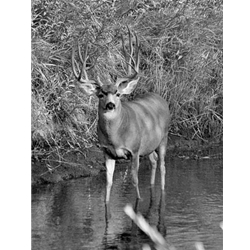
A Beginner's Guide to Bow Hunting
The sport of bow hunting and archery is ancient, dating back to primitive times. Archery has also been a tactic of warfare throughout time. Although technology has evolved with the invention of other hunting methods, bow hunting continues to be a popular pursuit for many people. An archer has a variety of options when choosing equipment and accessories. Once these decisions are made, the sport of archery can be very rewarding, but it does carry some risk due to the power of the weaponry. A beginner should explore the various bows and arrows available to determine the best fit. Taking a class that includes a focus on safety and hunting strategies can also be helpful for a novice bow hunter.
Archery and bow hunting can involve different types of bows. The most common bows are the compound, recurve, and crossbow. People engaging in archery competitions might choose a recurve bow, which features a riser, limbs, and string. Compound bows also feature a riser and limbs, but these bows have an additional pulley system that aids in drawing and shooting. Compound bows are the standard choice for bow hunting. A crossbow might be either a compound or recurve, but the difference with this bow is that it features a trigger that resembles that of a rifle. A crossbow is actually a firearm, making it necessary to learn comprehensive firearm safety skills prior to using this weapon. A novice archer might focus on a fiberglass compound bow to begin learning about this sport. Before using a compound bow, an expert will need to assist with setting the bow weight to match the strength of the person using it. As experience increases, the bow weight generally increases as well.
Bow hunting is a sport that demands expertise, skill, and patience. Venturing into the woods also requires adherence to local laws and hunting ethics to ensure that you hunt safely and respectfully. States designate specific time periods for bow hunting, and hunters must comply with these periods for lawful hunting. Different states set these periods based on local conditions. States also require that hunters have licenses, which usually involves completing some type of educational course and testing. Hunters must also comply with state-set limits on game.
Blending in with the natural surroundings of the woods will be important for successful bow hunting. Many bow hunters hunt from a stand installed in a tree because this provides an advantageous vantage point for locating game. When using a tree stand, safety and security of your position will be an ongoing concern. A fall from a tree stand will probably result in some type of injury. While waiting in a tree stand often proves successful, many hunters find this process tedious. Tracking game on the ground is another option for a bow hunter.
Archery can be inherently dangerous due to the equipment used for the sport. The bow hunter can minimize some of these risks by proceeding with care. Before using a bow, always inspect all equipment completely. Look for excessive wear, cracking, or twisting in all bow components. Components include the bow itself, bowstring, pulleys, cables, and screws. Arrow shafts, nocks, and fletches must also be in perfect condition. If you find any worn or defective components or accessories, do not use them until you have repaired or replaced them. A common risk of shooting involves accidents with the bow string, which could lead to significant injury to the hand and forearm. Using an arm guard and finger tab can help protect the hand and forearm during the shooting process.
Before shooting or even drawing the bow, inspect the line of sight between you and the target completely, including areas to the right and left of the target. All arrow-flight zones must be completely clear of people or unintended targets such as pets. If you cannot follow the path of an arrow, do not shoot it. Never draw a bow unless you are aiming at a target. During practice at an archery range, pay close attention to directives for retrieving arrows. Never move to retrieve arrows until you receive an "all clear" signal.
Different Types of Bows
Hunting With a Bow
Safety With a Bow
This page was write by our own content writer Tim Barson. To learn more about
Tim Barson, click here to read about this biography.